Best tripods 2024: For astrophotography, landscapes, travel, video and more
These are the best tripods currently on the market, no matter what type of photography you're shooting.
- Quick list
- Best overall
- Best for portability
- Best for multiple disciplines
- Best lightweight option
- Best affordable option
- Best for versatility
- Best for awkward positions
- Best for shooting low to the ground
- Best for studio photographers
- Best for flexibility
- Best for beginners
- Tripod FAQ
- How we test
- Best for awkward positions
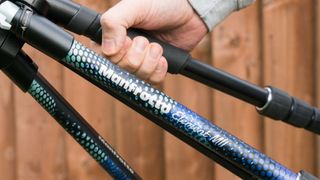
1. The list in brief ↴
2. Best overall
3. Best for portability
4. Best for multiple disciplines
5. Best lightweight option
6. Best affordable option
7. Best for versatility
8. Best for awkward positions
9. Best for shooting low to the ground
10. Best for studio photographers
11. Best for flexibility
12. Best for beginners
13. Tripod FAQs
14. How we test
Having one of the best tripods in your kit is very important if you take your photography seriously. Whether it's to steady your camera on those long exposures, or helping you reach new angles, tripods have a lot of uses — and if you're heading out into the world (or the studio) with your camera, you shouldn't hesitate to take a tripod along with you.
While most tripods all have the same aim — to keep your camera steady and secure while you're shooting — they aren't all made equally, and some will be better at a particular job than others. For example, if you shoot in particular terrains, you'll find that some tripods are better equipped for the job than others.
We've taken everything into account when rounding up our picks of the best tripods, and most of the tripods on this list have been tried and tested by our own experts. In each section below, you'll find the pros and cons of each one we've selected, and we've noted the areas they're strong (or weak) in.
We've also rounded up the best travel tripods if you're primarily looking for an ultra-portable option. Some models also support additional accessories like interchangeable feet to handle different types of terrain when shooting outdoors. You'll want to make sure that any tripod you buy is suitable for the kit you intend to use, including your camera, lens and any other accessories. Combine with one of the best cameras or best mirrorless cameras and start snapping.

Kimberley Lane is a landscape & seascape photographer living in South Wales. Originally using photography as a way to cope with health issues, she aims to portray a feeling of calm and peace through her images. Her work has been featured in a number of national photography magazines.
The quick list
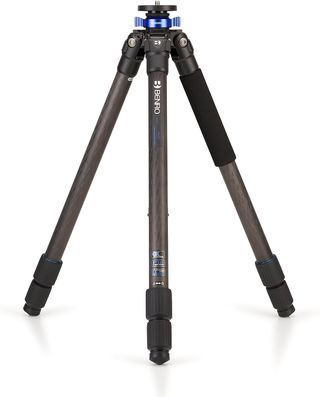
Best overall
A serious bit of kit for serious astrophotographers — it's not cheap, but you need to pay for exceptional quality.
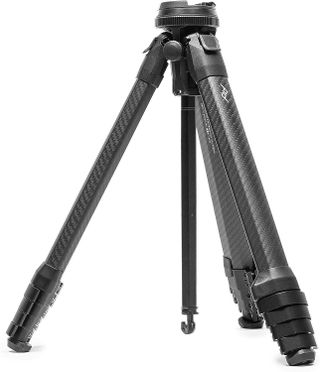
Best for portability
Designed with travel in mind, this tripod folds down into a neat, sleek package that's perfect for fitting into a suitcase or backpack.
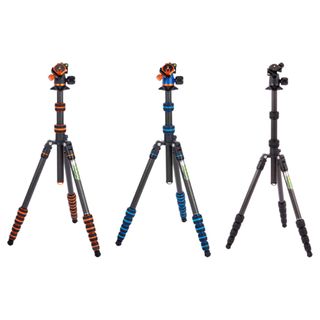
Best for multiple disciplines
For photographers who shoot multiple different photographic styles, it's an absolute joy, but it is on the more expensive end of the spectrum.
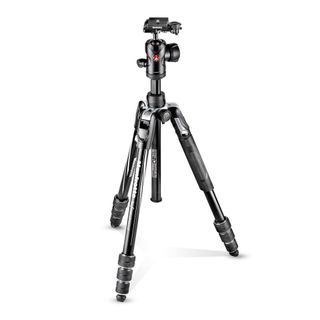
Best lightweight option
If weight is your concern, look no further, as this is the lightest aluminum tripod you're likely to find.
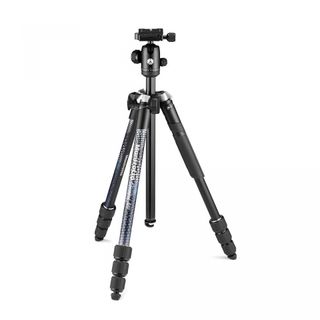
Best affordable option
A decent tripod on the more affordable end of the spectrum, this tripod will do everything you need it to do.
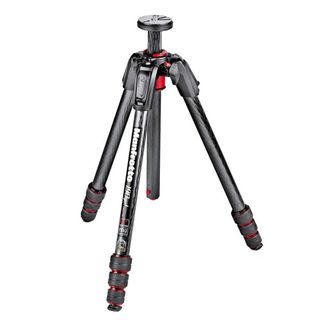
Best for versatility
This tripod has many different configurations and accessories to choose from and can handle an impressive load capacity given its light weight.
Load the next 4 products ↴
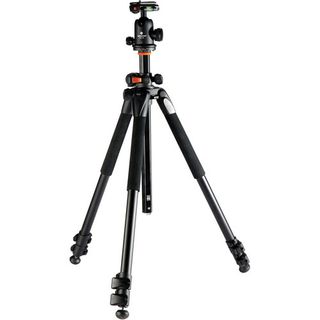
Best for awkward positions
A solid, sturdy and versatile option that can handle almost any shooting position you require.
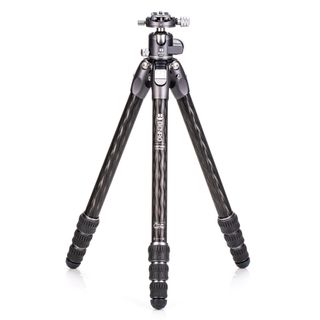
Best for shooting low to the ground
An incredibly versatile, lightweight yet capable tripod that's great in almost any situation — particularly shooting low to the ground.
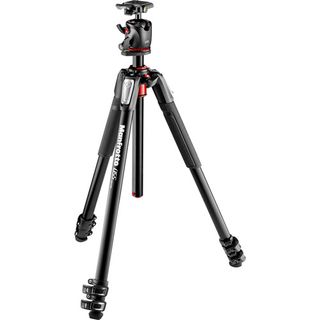
Best for studio photographers
For heavy setups in a professional environment, this tripod would be ideal — but it doesn't come cheap.
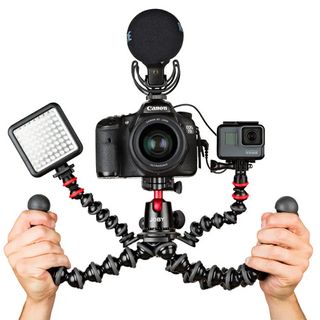
Best for flexibility
Different from most tripods, this flexible tiny tripod can elevate the way you capture footage. A great option for vloggers and mobile content creators.
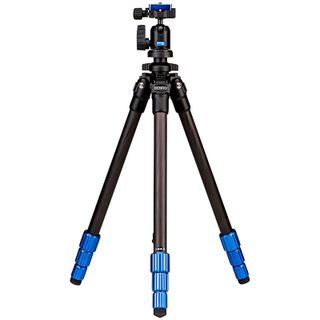
Best for beginners
A fantastic beginner tripod from a reputable brand, this tripod from Benro would be a fantastic addition to your growing kit.
Best tripods we recommend in 2024
Why you can trust Space.com
Best overall

Benro Mach3 TMA37C
Our expert review:
Specifications
Reasons to buy
Reasons to avoid
✅ You need durability: If you use your tripod a lot and need something that's going to withstand tough terrain and adverse conditions, this will suit you well.
✅ You want something that will last: The exceptional build quality means this tripod will last you for years.
❌ You don't have a big budget: This is a serious bit of kit with a serious price tag, so if you don't have the budget for something as pro-grade as this, there are cheaper alternatives.
❌ You're a casual user: This tripod could well be overkill if you only use your tripod every now and again or if you're a beginner.
🔎 Benro Mach3 TMA37C An impressive tripod built to withstand anything you throw at it, it can cater to multiple shooting styles and is a fantastic choice for anyone who is serious about photography. As expected, for such a high-end tripod, there is a high end price tag to match. ★★★★½
The best of all the best tripods on the market has to be the Benro Mach3 9X CF TMA37C: A professional bit of kit that is sure to be the envy of any photographers. It's not cheap, but it's well worth the cost if sturdiness and durability is what you're looking for.
This is a premium tripod that can be used on all types of terrain and in all types of weather thanks to its spiked feet. If you're typically an outdoor shooter, then, whether astrophotography or wildlife/landscape photography, the Benro Mach3 is an excellent choice.
There are two versions of this tripod on the market: One made of carbon fiber and another made of aluminum. Unsurprisingly, the carbon fiber version is the more expensive of the two, but both are surprisingly lightweight and equally durable. If you're looking for something extra-portable, though, the carbon fiber model is the lighter of the two.
The short center column of the Benro Mach3 means you can shoot low to the ground without any issues, giving extra flexibility when setting up creative shots. The downside, though, is that you'll need to buy a tripod head separately, making it even more of an expense — but it at least means you can purchase a head that suits your shooting style.
If you have the budget for it, there are few better tripods on the market than the Benro Mach3 9X CF TMA37C. This is an excellent bit of kit for professionals and enthusiasts alike, which will last for years to come.
- Check out the Best cameras for photos and videos
| Attributes | Notes |
|---|---|
| Design | Chunky but surprisingly lightweight. |
| Performance | Durable, reliable and incredibly capable. |
| Functionality | Offers a range of configuration options. |
Best for portability







Specifications
Reasons to buy
Reasons to avoid
✅ You want to travel with it: More than just being lightweight, it's specifically designed with travel in mind, and it folds down neatly with no protruding parts, and fits effortlessly into a suitcase or backpack.
✅ You shoot with your smartphone: It features a novel smartphone mount, so users who create content with their smartphone will be covered.
❌ You're on a budget: This tripod is on the more expensive end of the market, so may be inaccessible to anyone on a budget.
❌ You want a tall tripod: This isn't the tallest tripod we've tried, despite having 5 leg sections, which may be annoying for taller users.
🔎 Peak Design Travel Tripod An impressively compact tripod that's built with travel in mind, folding down into a super sleek package that you can take anywhere. It's not the tallest, or the most affordable, but we think it's worth the money. ★★★★½
The Peak Design Travel Tripod topped our list of the best travel tripods and also stands as a worthy runner-up here. It has an elegant and well-thought-out design ideal for travel photographers or astrophotographers who need to journey to a remote location to escape light pollution.
Unlike other travel tripods we've tried, the Peak Design tripod folds down with no gaps between the legs, making it easy to pack in your luggage or camera bag. It measures only 3.1 inches (7.9 cm) in diameter when folded down, and the aluminum version is also relatively light at 3.4 lbs (1.6 kg). It's also available in a carbon fiber version, but at 2.8 lbs (1.3 kg) you're not saving a lot of weight for the extra money, so we feel the aluminum model is better value.
In our Peak Design Travel Tripod review, we praised how small and compact the ball head design is, noting it's small than almost any other tripod on the market. There are no extra levers or knobs sticking out anywhere, which keeps things nice and tidy (and easy to transport!). The camera plate, on the other hand, isn't quite so good, as you'll need a hex tool in order to attach it — if you're shooting astro in the dark, it's a very fiddly task that you probably could do without.
Once it's all set up, however, the Peak Design Travel Tripod is extremely secure, with its feet feeling very sturdy at the bottom of the legs. It's not quite as tall as some other tripods on this list, but we love the versatility of it — it's capable of shooting just 5.5 inches (14cm) from the ground. Oh, and if you want to shoot with your phone's camera, there's a handy smartphone mount in the center column, which is a nice touch.
- Read our Peak Design Travel Tripod review
| Attributes | Notes |
|---|---|
| Design | Narrow, space saving design. |
| Performance | Easy setup and takedown. |
| Functionality | Not as tall as some tripods. |
Best for multiple disciplines





Specifications
Reasons to buy
Reasons to avoid
✅ You often use your tripod: For frequent use over multiple photography disciplines, this tripod will serve you well.
❌ You don't want to spend loads: While we do think it's worth the higher price point given the quality, it might not be the best option if you don't want to spend a lot.
🔎 3 Legged Thing Punks Brian tripod with AirHed A premium tripod with the price tag to match, but a fantastic option if you're looking for durability and quality. It can support heavy loads and folds down incredibly compact. ★★★★½
The Punks Brian tripod from 3 Legged Thing seems to have found the perfect balance between being one of the tallest tripods we've reviewed (nearly 74 inches when fully extended), while also being one of the most compact when folded up (at only 16 inches). This makes it remarkably versatile, appealing to taller people who still need something that is easy to carry around with them.
It has a very premium feel, with its eight layers of 100% pure pre-preg carbon fiber ensuring that it is light enough for everyday use, while also being incredibly sturdy. The five leg sections twist and untwist into place, and we particularly liked the textured rubber grips that you can find on all the knobs and leg twists. This makes it especially easy to use with cold hands or in damp weather conditions.
This tripod is also an excellent choice for anyone who plans to be shooting on a variety of different terrains since 3 Legged Thing offers a range of interchangeable foot accessories, including spikes, elevated spikes and claw grips. They've also made the center column detachable so that it can be used as a monopod, which can be handy for more awkward shots or selfies.
If we're being picky, we found the hex-key-enabled connector plate a little inconvenient until we were used to using it, but the whole tripod is well constructed, and you also get a nylon drawstring bag for the tripod and microfiber bag for the AirHed. Although it falls into the higher price range, we think it's worth it for the quality feel and versatility that you get.
- Read our full 3 Legged Thing PUNKS Brian tripod review
| Attributes | Notes |
|---|---|
| Design | Light and portable. |
| Performance | Hex key can be challenging in the dark. |
| Functionality | Multiple leg positions. |
Best lightweight option








Specifications
Reasons to buy
Reasons to avoid
✅ You have heavy kit: We found it to be very sturdy and can hold loads of up to 19.48 lbs / 8.84kg.
❌ You want a travel tripod: Although it's an incredibly lightweight tripod, it is fairly large when collapsed so it wouldn't be the best option for traveling.
🔎 Manfrotto BeFree Advanced aluminum An incredibly lightweight tripod at a very reasonable price that ticks all the boxes, but it wouldn't be the best option for travel due to its larger size when collapsed. ★★★★½
When you're moving around with a tripod, being lightweight is super important. And for that reason we can't praise the Manfrotto BeFree Advanced aluminum tripod enough: It's one of the lightest aluminum tripods around, proving you don't always need to fork out for carbon fiber to get something super light.
More impressively, though, is just how well built this tripod is. It has an excellent build quality, with its solid center column offering a lot of support thanks to its own fastening mechanism. While it doesn't hold the biggest load of all the tripods on this list (just under 20lbs), your camera alway feels reassuringly secure on top of the Manfrotto BeFree Advanced.
The build quality and security comes at a slight cost, though, as this isn't the most compact travel tripod out there. It's a small price to pay, and one we'd say is probably worth it, thanks to the high-end features like wraparound twist-lock rings on the leg choices, and an aluminum 200PL PRO base plate. So unless you absolutely need a really compact tripod for travel, it's a trade worth considering.
One of the best features of this tripod is its versatile ball head, which allows you to position your camera at any angle and has a firm locking mechanism to keep your camera safe and secure in whatever position you set it in. This, alongside the four-section legs offering three different angled positions, makes it a very flexible tripod for framing your perfect shot.
At 3.3 lbs (1.5 kg), it's barely heavier than most carbon fiber rivals, making it excellent value for money. Although, as is often the case with travel tripods, some compromise has been made on the height to keep the weight down, so it may not be best suited to taller people since it only reaches 59 inches (150 cm) when fully extended.
| Attributes | Notes |
|---|---|
| Design | Lightweight but large when collapsed. |
| Performance | Easy and quick setup. |
| Functionality | Strong center column. |
Best affordable option








Specifications
Reasons to buy
Reasons to avoid
✅ You're on a budget: This is a decent option for anyone on a budget. It doesn't have the bells and whistles of the higher-priced models, but it'll do what you need it to do.
✅ You're a beginner: It's easy to setup and take down, and there are no complicated bits to contend with, making it a good option to get started with.
✅ You want to shoot video or panoramas: The smooth 360-degree panning on this tripod is a standout feature that will appeal to videographers.
❌ You want to shoot at unusual angles: This tripod doesn't shoot low to the ground, and the central column can't fold down to 90-degrees.
🔎 Manfrotto Element MII For beginners, this would be a great option that won't break the bank. If you want something simple that does the job with no complications, it would suit you well. ★★★★
The Manfrotto Element MII is a fantastic entry-level tripod that's ideal for hobbyists, beginners or anyone on a tighter budget. It's a lightweight aluminum build that is easy to set up and operate and has an attractive patterned design on two of the legs, with the third leg being encased in a rubber grip for easy carrying.
We think this tripod offers a perfect balance since it is both sturdy and lightweight. In our Manfrotto Element MII review, we found it light and compact to carry around, but it also withstood some very windy coastal conditions even with a relatively light camera setup on board. It also comes with a detachable hook that can be screwed into the bottom of the central column for added weight, should you need it.
There's no fiddly procedures involved in setting up the Manfrotto Element MII: Thanks to its twist locks and legs that open very quickly, it's a painless and stress-free process. We also like that the tripod's ball head has built-in spirit levels for shooting both landscape and portrait orientations — although a small downside is that the camera obscures them once it's in place. So you'll need to make sure you check you're level beforehand.
The main drawback of the Manfrotto Element MII is that the central column doesn't allow for any rotation, meaning you can't shoot at 90 degrees. Depending on your photography style it might not be an issue at all, but it's worth noting. On the other hand, the 360-degree panning function on the tripod is excellent: It's silky smooth and very useful for shooting videos, panoramas or tracking moving objects.
If you're looking to upgrade, the Manfrotto Element MII also comes in a carbon fiber version, which should be even more lightweight than the one we tested, and there's also a version with Bluetooth remote control if that appeals to you.
- Read our full Manfrotto Element MII review
| Attributes | Notes |
|---|---|
| Design | Aluminium or carbon fiber variants. |
| Performance | Sturdy but lightweight. |
| Functionality | Easy to put up and take down. |
Best for versatility






Specifications
Reasons to buy
Reasons to avoid
✅ You need portable and sturdy: Despite being lightweight at only 4.1 lbs, it can handle an impressive maximum load of 14.3 lbs.
❌ You're on a tight budget: This isn't the most expensive option on the market, but there are cheaper options available if you're on a tight budget.
🔎 Manfrotto 190 Go! Aluminum tripod This tripod is lightweight, portable, easy to put up and down and has a whole load of different options to choose from in regards to build and construction. Though it may be too pricey for casual photographers. ★★★★½
Manfrotto's 190 Go! range of tripods are designed to be quick and easy to operate, with signature 'M-lock' twist locks that help you to set up your tripod in a matter of seconds. In our Manfrotto 190 Go! review we tested out the carbon fiber version, but the aluminum version, being both cheaper and lighter, is an appealing prospect for anyone who's looking for quality on a tighter budget. It weighs just 3.66 lbs (1.66kg), but you can still mount an impressive 33.1 lbs (15kg) of kit on it and we had no problem mounting a heavy-duty DSLR setup nice and securely.
This tripod offers great flexibility, since the leg positions can be adjusted to four different angles at 25, 46, 66 or 88 degrees. The center column can also swing out horizontally at 90 degrees, making it easy to take shots from close to the ground at a minimum height of 3.5 inches (9cm). This can be particularly useful for macro shooting or for landscape photographers looking to capture an alternative perspective.
One particularly neat feature of the Manfrotto 190 Go! tripod is its 'Easy Link' attachment. You'll find it hidden underneath a rubber cover in the top casing, and it allows you to attach a bunch of useful accessories, like an LED light reflector. Whether you shoot in the studio or outside, it's something that will come in handy for many photographers.
This is still a very pricey tripod, and so casual photographers might be put off, but if you do have the budget for it, it's an excellent piece of kit. Its lightweight build and versatile features make it a valuable competitor to more expensive carbon fiber models.
- Read our full Manfrotto 190 Go! review
| Attributes | Notes |
|---|---|
| Design | Aluminum and carbon fiber variants. |
| Performance | Super easy to assemble. |
| Functionality | Choose from different construction, heads and leg sections. |
Best for awkward positions





Specifications
Reasons to buy
Reasons to avoid
✅ You want to shoot in different positions: This tripod is capable of getting itself into many weird and wonderful positions, with the legs splaying out to almost 90º to the center column.
✅ You're on a budget: If you need a sturdy tripod that won't break the bank, this is a great option.
❌ You want something lightweight: This tripod is heavier and bulkier than many others on the market, so it's best suited to backyard astrophotography or if you're not going to venture far from your car.
🔎 Vanguard Alta Pro 263AB If you don't plan on walking too far with it, it's a great affordable option that provides a lot of versatility with the ability to shoot very low to the ground, is sturdy and reliable. ★★★★
If you like getting creative with your photography, shooting from a number of different angles and positions, the Vanguard Alta Pro 263AB is a great choice of tripod. Almost every part of this tripod adjusts, from its legs, which can go from 25 degrees to almost 90 degrees, and the central column itself can be retracted and angled at 90 degrees from the legs. Set it up in just the right way, and you can point your camera directly at the sky from just 10 inches above the ground.
If you're an astrophotographer, then, the Alta Pro is a fantastic choice, making it easy to create long-exposure shots of the night sky. Capturing something like a star trail will be made easier than ever without having to worry about judder coming from a sudden gust of wind, for example. It also helps that it's pretty easy to set up, with the leg adjustments being a simple case of pushing just one button.
While this tripod offers great versatility and stability, the downside is that it is quite heavy and bulky to carry around. Weighing in at over 5 lbs and still measuring 30 inches long even when fully folded down, this isn't a tripod that you want to be transporting very far on foot and it won't fit in any airline carry-on cases.
Another slight annoyance we encountered in our Vanguard Alta Pro 263AB review was that instead of the convenient D-ring we're used to, the connector plate on this tripod comes with a fiddly screw fitting that requires a coin or tool to tighten and untighten. Although they provide you with a tool to do this, it did feel like an unnecessary faff when better options are available.
Overall, this is a highly versatile tripod that makes getting a good astro shot easy, but it's probably best suited to people who like to engage in astrophotography from their backyard or who are able to drive most of the way toward their destination spot.
- Read our full Vanguard Alta Pro 263AB tripod review
| Attributes | Notes |
|---|---|
| Design | Very flexible legs. |
| Performance | Clip legs easy to put up and take down in the dark. |
| Functionality | 90º central column gives a good range of movement. |
Best for shooting low to the ground






Specifications
Reasons to buy
Reasons to avoid
✅ You want to shoot low to the ground: Its lack of center column keeps this tripod light, and also helps it be much more flexible than most.
✅ You want something versatile: This is a great tripod for almost any type of terrain thanks to its interchangeable feet.
❌ You need a tall tripod: The Benro Tortoise 24C is shorter than most, so if you need something tall, this isn't it.
🔎 Benro Tortoise 24C: If you want something versatile, lightweight, and with an excellent build quality, you can't go wrong. It's not the tallest tripod but if you plan on shooting low, this is the tripod for you. ★★★★
While the Vanguard Alta Pro we mentioned above excels at shooting in weird and wonderful angles, the Benro Tortoise 24C tripod should be your go-to if you plan on getting low. Its legs can get very close to the ground, offering a sturdy and reliable base for shooting some interesting shots.
But that's not all this tripod is good for. In our Benro Tortoise 24C review, we praised the tripod for its versatility and also for its sturdiness and build quality. Sporting a carbon fiber body, the Tortoise is extremely light but still very reliable — it can hold up to 30.9lbs, so it's good to be used with most photography kit.
It's great for most terrains too, thanks to its interchangeable feet. It's equipped with rubber grips on the bottom as standard, or you can change them out for spikes, letting you sink into the ground for extra stability.
However, the Benro Tortoise 24C doesn't have a center column — and that's one of the reasons its able to remain so light and compact. It does mean that it's shorter than other tripods, so it's not the best choice if you're going to need extra height when shooting. But staying close to the ground? This is the tripod for you.
- Read our full Benro Tortoise 24C review
| Attributes | Notes |
|---|---|
| Design | Lightweight and compact with a carbon fiber body. |
| Performance | Very easy to set up and take down (even in the dark) |
| Functionality | Lack of center column means it's shorter than some tripods. |
Best for studio photographers







Specifications
Reasons to buy
Reasons to avoid
✅ You have a heavy setup: The max load capacity of this tripod is 33 lbs/15kg, ideal for studio or professional photographers with extra accessories.
✅ You want precision: The leg angle selector, 90-degree center column mechanism and 360-degree rotation markings make it easy to frame your perfect shot.
✅ You will be shooting in cold weather: The Quick Power Lock levers on this tripod are very glove-friendly and it can be operated as low as 22°F/-30°C.
❌ You're a wildlife photographer: The setup on this tripod can be a bit noisy and may scare away potential subjects.
❌ You don't want to spend loads: If affordability is a factor, this tripod is not the one for you.
🔎 Manfrotto MK055XPRO3 BHQ-2 A tripod best suited to studio photographers who utilize a number of different accessories. Although it makes a good tripod for astrophotographers, it's expensive and could be overkill for beginners. ★★★★
The Manfrotto MK055XPRO3 BHQ-2 is a sturdy, well-built tripod that is designed to appeal to professionals and amateurs alike. It has an impressive maximum payload of 33 lbs and in our Manfrotto MK055XPRO3 BHQ-2 review, we encountered no camera creep when we left our Nikon D800 pointing up at the sky for several hours.
The tripod features an aluminum construction with convenient grips on two of its legs, making it easy to carry. Each leg is divided into three sections, and the Quick Power Lock levers make extending and locking the leg sections a breeze. They are user-friendly even when wearing gloves in cold weather, but they can be a bit noisy, which may not be ideal for wildlife photographers who need to maintain silence. Additionally, there's an Easy Link attachment on the top section that allows you to attach accessories such as a flash, LED reflector or microphone.
If you're a seasoned photographer, you'll love the level of precision you're able to achieve with this tripod. You can select the precise angle of each leg, for example, choosing between 25, 46, 66 and 88 degrees. There's a 90-degree center column mechanism too, and the ball head has 360-degree markings all the way around which make it easy to rotate your camera whether you're shooting video or tracking a moving object.
With something this sturdy and precise, however, there has to be a trade-off, and in this case it's the weight. The Manfrotto MK055XPRO3 BHQ-2 is pretty heavy, and that's why we recommend it most for studio use. You can travel around with it, of course — we carried it around for half an hour with no problems — but if you're looking for something that's primarily lightweight and travel-friendly, there are better tripods on the market. But for sheer resilience? They don't come much better than this.
- Read our full Manfrotto MK055XPRO3 BHQ-2 review
| Attributes | Notes |
|---|---|
| Design | Made from aluminum. |
| Performance | Legs are strong and reliable. |
| Functionality | 90º central column gives a good range of movement. |
Best for flexibility



Specifications
Reasons to buy
Reasons to avoid
✅ You're a vlogger/videographer: The GorillaPod would be ideal for daily vloggers and content creators because you can attach it to almost anything to capture your footage.
✅ You travel a lot: It's incredibly lightweight and compact — very easy to take traveling.
❌ You need something sturdy: The GorillaPod isn't designed to be super sturdy or rugged, so if you have heavy kit or you often shoot in adverse weather, there are more suitable options.
🔎 Joby GorillaPod 5K The GorillaPod is quite a niche product, so it's not for everyone, but it's ideal for on-the-go shooting or for content creators who need novel ways to capture their footage ★★★½
The Joby GorillaPod 5K isn't your usual type of tripod. It's probably not going to appeal to traditional photographers, but if you like trying out funky innovations and tend to seek out creative photography opportunities, you might find a lot of use in the GorillaPod. Particularly considering how lightweight and travel-friendly it is.
Rather than having straight tripod legs, it has three legs made from articulated ball joints, each with rubber grips wrapped around them. The idea is that you wrap the GorillaPod around any object you want — like a fence pole, or a railing — in order to create a stable grip for your camera.
It's pretty effective at doing that, but you need to bear in mind that the GorillaPod 5K's maximum load weight is much less than that of other tripods: just 11lbs. That's plenty for a full-frame camera and kit lens, but we would be very wary about mounting our most expensive equipment on it.
The ball head is more traditional in style, with two knobs — one for setting the horizontal position and one for rotating the ball head. It also has an Arca-Swiss connector plate, allowing for easy camera mounting via a D-ring.
There are pros and cons to this unique design. The setup allows for great versatility of shot choice, and we noticed that the tripod's low profile makes it very resistant to any wobbles caused by the wind. However, it can be a bit tricky to level it for astro-style shooting, and you are reliant on finding something appropriate to mount it on in the location you wish to shoot from because it doesn't perform very well freestanding.
Newcomers to photography might enjoy the novel nature of this tripod, but for seasoned photographers, the Joby GorillaPod is unlikely to meet all of their stabilization needs. That said, it is the lightest tripod on our list at only 1.6 lbs (0.73 kg), so it might make a handy backup to carry around on days when you're not sure if you'll need your full kit.
- Read our full Joby GorillaPod 5K Tripod review
| Attributes | Notes |
|---|---|
| Design | Lightweight with flexible legs. |
| Performance | Easily attaches to various objects and surfaces. |
| Functionality | Practical for on-the-go scenarios. |
Best for beginners

Benro Slim Carbon Fiber Tripod
Our expert review:
Specifications
Reasons to buy
Reasons to avoid
✅ You're a beginner: This tripod is a good option for beginners who don't want any of the complicated setups or bells and whistles that more advanced tripods have.
✅ You don't want to spend loads: Benro aren't a cheap brand on the whole, but this option is very affordable for what you get.
✅ You don't always use a tripod: This tripod is lightweight and compact enough to carry with you 'just in case' you might need it when you venture out.
❌ You use your tripod a lot: While it's not a bad tripod, some aspects are cheaply finished and would wear out quickly with a lot of use. If you use your tripod a lot, we'd recommend investing in a more high-end option.
🔎 Benro Slim Carbon Fiber Tripod A decent option for a beginner or if you don't use your tripod a lot, it's compact and lightweight enough to carry with you 'just in case'. We rate Benro as a brand, and this is one of their more affordable options. ★★★½
For those nights when you're trudging between vantage points or when you might need a tripod but don't quite know what the day has in store, you can't beat the Benro Slim travel tripod. This compact, well-constructed tripod was designed with portability and movement in mind and has everything that a beginner landscape or astrophotographer needs to get started in nightscapes and long-exposure photography.
While initially intended for mirrorless systems, the Benro Slim pleasantly surprises by also supporting the weight of DSLRs and zoom lenses. As expected from this well-known manufacturer, it has remarkable build quality. It is available at a surprisingly reasonable price, even for the carbon fiber model. This tripod is a dependable companion that's compact enough to slip into your camera bag, and its lightweight design ensures you can keep it close whenever you need it.
It's available in carbon fiber and aluminum versions, which differ only in weight and price point. As you'd expect, the aluminum one is slightly weightier but also slightly cheaper. It's easy to put up and take down in the dark and features anodized aluminum leg twists that secure into place with half a twist. It uses a standard Arca-Swiss connector plate that slides in easily and is secure enough for a range of mirrorless and DSLR lenses.
| Attributes | Notes |
|---|---|
| Design | Compact and lightweight, but some cheap finishes. |
| Performance | Easy to put up and take down with simple leg twists. |
| Functionality | Max load capacity 8.8 lbs / 4kg. |
Frequently Asked Questions
We answer your most pressing questions on the best tripods in 2024 from what type of tripod is best to answering what a payload is and does. Take a look below.
What is the best tripod for cameras?
We think the Benro Mach3 TMA37C is the best camera tripod overall. It ships with a short center column attachment for more flexibilty when shooting and also spiked feet for use on softer terrains. It's intuitive to use and has sturdy leg locks which operate easily even when wearing gloves.
What is the best tripod for beginners?
What is the best budget tripod?
The Manfrotto Element MII is the best affordable tripod for beginners with a maximum height of 63-inches (160cm) and a folded height of just 16.9-inches (43cm). It comes in both aluminum and carbon fiber variants and is best suited to beginner camera gear which is typically slightly lighter than professional cameras.
How many legs does a tripod have?
Tripods have three legs. The term 'tri' comes from the Latin 'tres' or Greek 'trias' which means 'three.' However, tripod legs can have multiple sections. There is no defined limit to how many leg sections a tripod can have, but they typically vary between one and five, with three and four leg sections being the most common.
The Joby GorillaPod 5K has one leg section because its legs are flexible and don't extend in the traditional sense. However, the Peak Design Travel Tripod has five leg sections.
Generally, the fewer leg sections a tripod has, the more stable it is. However, a tripod with fewer leg sections may not pack down as small as something with more leg sections. Note the size difference between the Benro Mach3 TMA37C (three leg sections, folded height: 24.6 inches) and the Peak Design Travel Tripod (five leg sections, folded height: 15.4 inches) to see how that works.
How does a tripod work?
A traditional camera tripod is used to stabilize a camera for photography or videography in order to keep compositions still. This is useful during longer exposures because camera movement during the exposure will blur an image. Often this is unwanted when taking stills photographs, however some photographers like to use Intentional Camera Movement (ICM) to deliberately blur an image in one direction for artistic affect.
ICM is typically done through the use of a tripod head which can be locked off to move in one direction only, like a three-way head, rather than a ball-head which can move in 360-degrees.
What makes a good tripod?
Aluminum vs carbon fiber tripods: Which are best?
Most tripods are made of either aluminum or carbon fiber. The latter is much lighter and therefore easier to carry around, but typically more expensive. Aluminum tripods are generally cheaper but slightly heavier and can get colder, affecting handling and functioning on colder nights when taking astrophotographs.
There are a few things to consider before you grab one of the best tripods to ensure it meets your requirements. These are namely stability, portability, weight and price.
You'll have to weigh what you want to prioritize, especially if you're using one of the large and heavy best zoom lenses for your night sky images.
Removable feet, in-built spirit levels, and tripod head compatibility are all things to consider when picking your tripod. You can also check out our guides for the best lenses for astrophotography, and the best camera backpacks.
As you can see from our selection above, there's a lot to consider when investing in a tripod. But they're essential if combined with any of the best cameras.
What does tripod payload mean?
The tripod payload is the maximum weight (in pounds or kilograms) that it can support. The payload would be the combined weight of the camera, lens and any camera accessories attached to the tripod. Add up the combined weight of all these items to see if a tripod will support the gear you're planning on using.
Bear in mind that a tripod may support payloads greater than its stated maximum payload, but its sturdiness and resistance to wind may be compromised. So if a big gust of wind blows through and you're over the payload, the tripod may fall over.
What height tripod do I need?
Some people argue that smaller travel tripods don't always offer enough height for easy camera operation but that depends entirely on how tall you are and it's not quite so important for astrophotography.
Most of the models we've reviewed here have legs that can be splayed wider to allow the camera to be set up quite close to the ground. The lower center of gravity can increase stability for long-exposure night sky photos, but flexion in the legs must be noted when doing this.
Tripod legs: Twist or flip locks?
Tripod leg sections are extended and secured with either flip or twist locks. The twist lock design tends to be more secure but some manufacturers, notably Manfrotto, have bucked the trend and devised some particularly secure flip locks.
Should I change my tripod feet?
Tripod feet are generally made from a thick rubber that has good traction on an array of surfaces and many — but not all — are designed with the option to unscrew them and attach either spiked or clawed feet for better purchase on rougher ground and sand.
How we test the best tripods for astrophotography
To guarantee you're getting honest, up-to-date recommendations on the best tripods to buy here at Space.com, we make sure to put every tripod through a rigorous review to test each product fully. Each tripod is reviewed based on many aspects, from its construction and design, to how well it functions and performs in the field.
Each tripod is carefully tested by our expert staff or knowledgeable freelance contributors who thoroughly know their subject areas. This ensures fair reviewing is backed by personal, hands-on experience with each tripod and is judged based on its price point, class and destined use.
We look at how easy each tripod is to operate, whether it contains the latest up-to-date stabilizing technology and look at its weight and portability. We'll also suggest if a particular tripod would benefit from any additional kit to give you the best photographing experience possible.
With complete editorial independence, Space.com are here to ensure you get the best buying advice on tripods, whether you should purchase one or not, making our buying guides and reviews reliable and transparent.
Best for awkward positions
Join our Space Forums to keep talking space on the latest missions, night sky and more! And if you have a news tip, correction or comment, let us know at: community@space.com.
Get the Space.com Newsletter
Breaking space news, the latest updates on rocket launches, skywatching events and more!

Kimberley Lane is a landscape & seascape photographer living in South Wales. Originally using photography as a way to cope with health issues, she aims to portray a feeling of calm and peace through her images. Her work has been featured in a number of national photography magazines.
- Rowena CockettContributing writer
- Tantse WalterContributing Writer
- Kimberley SnaithFreelance contributor